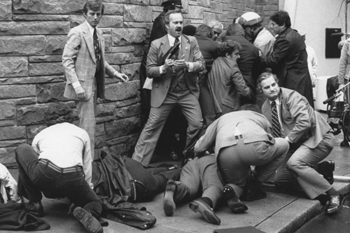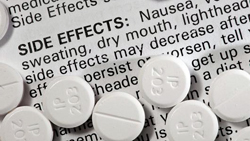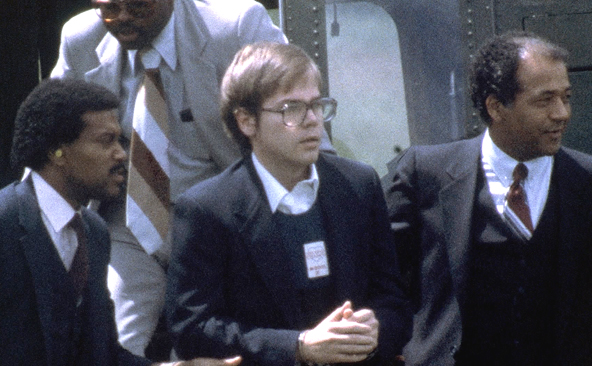By Kelly Patricia O’Meara
Published by CCHR International
The Mental Health Industry Watchdog
August 2, 2016
John Hinckley Jr., the man who tried to assassinate President Ronald Reagan, will, after 34 years as a patient at St. Elizabeth’s psychiatric hospital, be released into his mother’s care. While based on psychiatric advice, federal judge Paul Friedman has determined that Hinckley is no longer a danger to himself or others, Citizens Commission on Human Rights (CCHR) warns that the psychotropic drugs Hinckley is being released on could drive him to further violence.
The fact remains that Hinckley was under the care of a psychiatrist and on psychiatric drugs when he attempted to assassinate President Reagan. Expert evidence at his 1982 trial said that Valium, the sedative-hypnotic that Hinckley was prescribed, could have “ignited an inner rage,” causing him to act out with aggression.[1]
CCHR seriously questions how Hinckley being released on more psychiatric drugs linked to potential aggressive or violent behavior will provide any semblance of public safety today than it did three decades ago.[2]
Given what are the known serious and even life-threatening side effects associated with most of the psychiatric drugs on the market today, and Hinckley’s well-documented abnormal, violent behavior while on psychiatric drugs prior to the assassination attempt, which psychiatric drugs Hinckley is taking should be of concern to the courts and the public.

Hinckley was under the care of a psychiatrist and on psychiatric drugs when he attempted to assassinate President Reagan.
Hinckley’s psychiatric drug “treatments” began in 1980 when a Lubbock doctor, Baruch Rosen, prescribed to Hinckley, the antidepressant, Surmontil and the benzodiazepine, Valium, after Hinckley reportedly complained of hearing problems, dizziness and fatigue.[3] The side effects associated with Surmontil include confusion, delirium, disorientation, and impaired attention, while the side effects of Valium include agitation, anxiety, confusion, and outbursts of anger, to name a few.
Upon returning to his home in Colorado, Hinckley became the patient of Dr. John Hopper, who saw Hinckley approximately 15 times between Oct. of 1980 and Feb. 27, 1981 and prescribed him Valium.[4] During Hinckley’s subsequent trial, testimony was provided by Dr. David M. Bear who said the psychiatric treatment Hinckley received in the months leading up to the assassination attempt was “an absolute calamity” that worsened his already “bizarre state of mind” and may have helped ignite his “inner rage.”[5]
Dr. Bear further testified that Hinckley’s mental health and self-control were “further impaired” by taking Valium and which, when prescribed to some so-called schizophrenics “are inclined to act on their aggression when given valium.”[6]
According to the Government’s Expert Witness, Dr. Raymond F. Patterson, who testified during Hinckley’s latest hearing, as of April of 2015, Hinckley has been “treated” with two very serious mind-altering drugs: the antipsychotic Risperdal (risperidone) and the antidepressant Zoloft.[7]

The psychiatric drugs Hinckley currently is taking have serious and concerning adverse effects including aggressive behavior, agitation, anxiety, increased risk of suicidal thinking, unusual behavior, hostility, hallucinations and self-harm to name a few.
Despite the psychiatrists’ assurances that Hinckley is no longer a threat to himself or others, the psychiatric drugs Hinckley currently is taking have serious and concerning adverse effects: with the antipsychotic, Risperdal (risperidone), these include: aggressive behavior, agitation, anxiety, memory problems, tic-like or twitching movements and dyskinesia (uncontrolled, involuntary muscle movement),[8] and the antidepressant, Zoloft can cause increased risk of suicidal thinking, unusual behavior, hostility, aggressive reaction, hallucinations and self-harm to name a few.[9]
Psychiatrists also assured the court that Hinckley’s major depression and psychotic disorder are in “sustained remission” and have been for more than 27 years.
There is shocking unreliability of Hinckley’s diagnoses. In 1982, the psychiatric evaluation of Hinckley, by St. Elizabeth’s staff, revealed that he supposedly suffered from the severe, chronic mental disorders: Schizotypal Personality (principal diagnosis); Borderline Personality; Narcissistic Personality; Major Depression (recurrent in partial remission); and Schizoid Personality (premorbid).[10] These amount to five different mental disorders, yet, according to Judge Friedman, Hinckley now suffers from just one. Psychiatrists admit that psychotropic drugs don’t cure mental disorders.
The court record does not provide any specific data about how many different psychiatric drugs Hinckley has been prescribed during his 34-year incarceration at St. Elizabeth’s.
It would be irresponsible to forget that Hinckley has, for the last 34 years, been drugged and under the treatment of psychiatrists—the same mental health treatment that Hinckley received prior to his assassination attempt. These facts, of course, cast serious doubts about how the same psychiatric treatment plan will result in a different outcome. For obvious reasons, and concerned about another “calamity” due to psychiatric drugs, the public, at a minimum, deserves continual and complete disclosure of Hinckley’s psychiatric treatment.
Kelly Patricia O’Meara is an award-winning former investigative reporter for the Washington Times’ Insight Magazine, penning dozens of articles exposing the fraud of psychiatric diagnosis and the dangers of the psychiatric drugs—including her ground-breaking 1999 cover story, “Guns & Doses,” exposing the link between psychiatric drugs and acts of senseless violence. She is also the author of the highly acclaimed book, Psyched Out: How Psychiatry Sells Mental Illness and Pushes Pills that Kill. Prior to working as an investigative journalist, O’Meara spent sixteen years on Capitol Hill as a congressional staffer to four Members of Congress. She holds a B.S. in Political Science from the University of Maryland.
References:
[1] Stuart Taylor, Jr. “HINCKLEY TREATMENTS TERMED ‘ABSOLUTE CALAMITY’,” The New York Times, 19 May 1982, http://www.nytimes.com/1982/05/19/us/hinckley-treatments-termed-absolute-calamity.html.
[2] Prof. Peter C Gøtzsche, Tarang Sharma, PhD, Louise Schow Guski, Nanna Freund, “Suicidality and aggression during antidepressant treatment: systematic review and meta-analyses based on clinical study reports,” BMJ 2016;352:i65, 27 Jan. 2016; Nadege Rouve, Haleh Bagheri, et al., “Prescribed drugs and violence: a case/noncase study in the French PharmacoVigilance Database,” European Journal of Clinical Pharmacology, 7 June 2011; Thomas J. Moore, Joseph Glenmullen, Curt D. Furbert, “Prescription Drugs Associated with Reports of Violence Towards Others,” Public Library of Science ONE, Vol. 5, Iss. 12, Dec. 2010; Chouinard G, Chouinard V.A., “New Classification of Selective Serotonin Reuptake Inhibitor Withdrawal,” Psychother Psychosom 2015;84:63-71.
[3] Harry Jaffe, “Free John Hinckley,” Washingtonian, 23 Jul 2011, https://www.washingtonian.com/2011/09/23/free-john-hinckley/; “JOHN W. HINCKLEY JR.: INSIDE THE MIND OF RONALD REAGAN’S WOULD-BE ASSASSIN,” Newsweek, 27 Jul 2016, http://www.newsweek.com/john-hinckley-profile-ronald-reagan-assassination-484720.
[4] “PSYCHIATRIST STATES HE NEVER SAW SIGN OF MENTAL ILLNESS IN HINCKLEY,” The New York Times, 11 May 1982, http://www.nytimes.com/1982/05/11/us/psychiatrist-states-he-never-saw-sign-of-mental-illness-in-hinckley.html; Stuart Taylor, Jr. “HINCKLEY TREATMENTS TERMED ‘ABSOLUTE CALAMITY’,” The New York Times, 19 May 1982, http://www.nytimes.com/1982/05/19/us/hinckley-treatments-termed-absolute-calamity.html
[5] Stuart Taylor, Jr. “HINCKLEY TREATMENTS TERMED ‘ABSOLUTE CALAMITY’,” The New York Times, 19 May 1982, http://www.nytimes.com/1982/05/19/us/hinckley-treatments-termed-absolute-calamity.html.
[6] Ibid.
[7] United States of America v John W. Hinckley, Jr, Criminal No. 81-0306 (PLF), United States District Court for the District of Columbia, Opinion, Paul L. Friedman, United States District Judge, 27 Jul 2016, pg. 67, https://assets.documentcloud.org/documents/2999257/Judge-s-opinion-in-Hinckley-case.pdf.
[8] https://www.drugs.com/sfx/risperdal-side-effects.html
[9] https://www.drugs.com/sfx/zoloft-side-effects.html
[10] “EXCERPTS FROM PSYCHIATRIC EVALUATION OF HINCKLEY BY THE MENTAL HOSPITAL,” The New York Times, 10 Aug 1982, http://www.nytimes.com/1982/08/10/us/excerpts-from-psychiatric-evaluation-of-hinckley-by-the-mental-hospital.html?pagewanted=all.




SHARE YOUR STORY/COMMENT